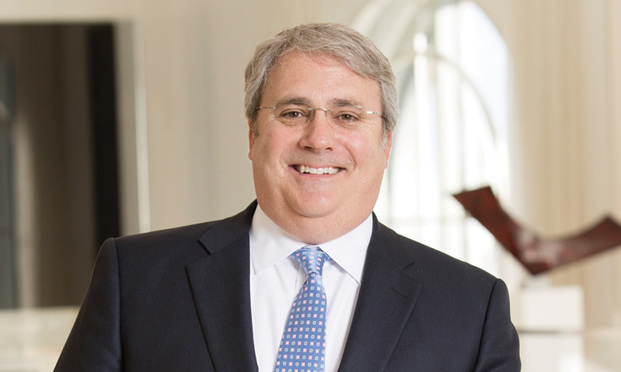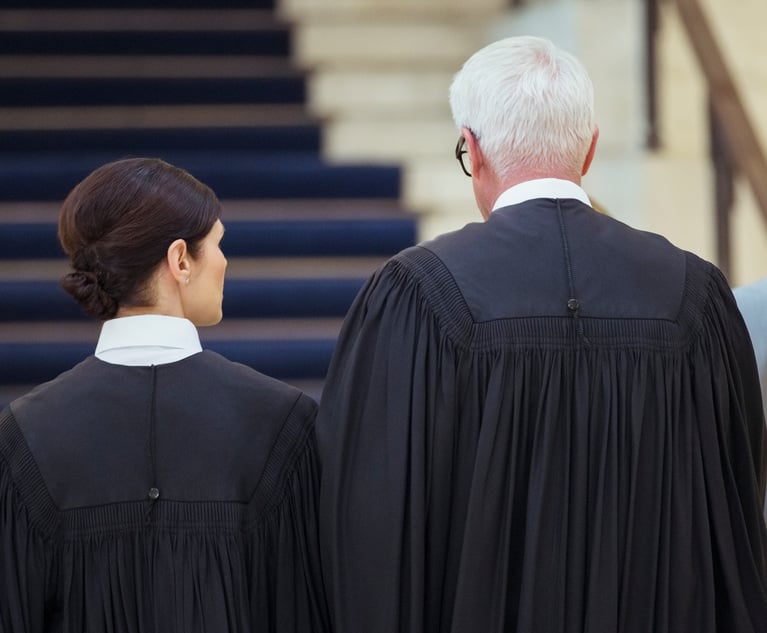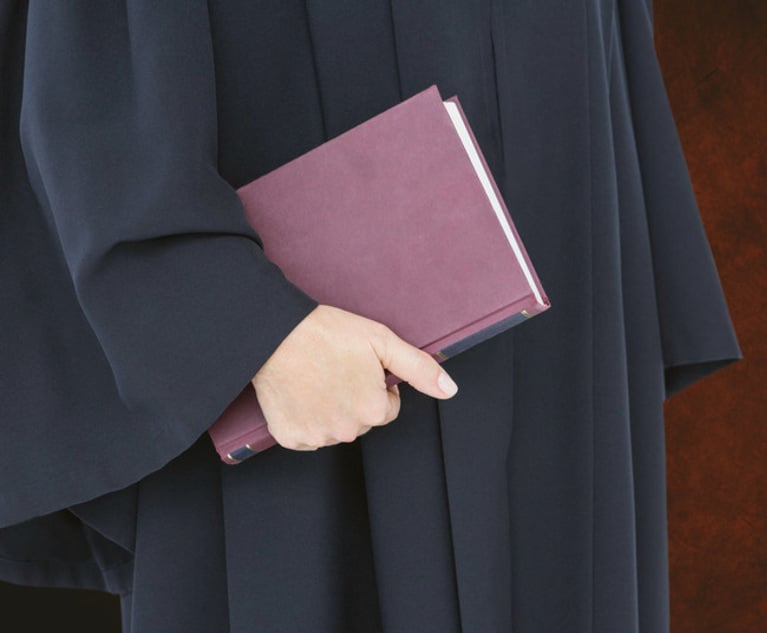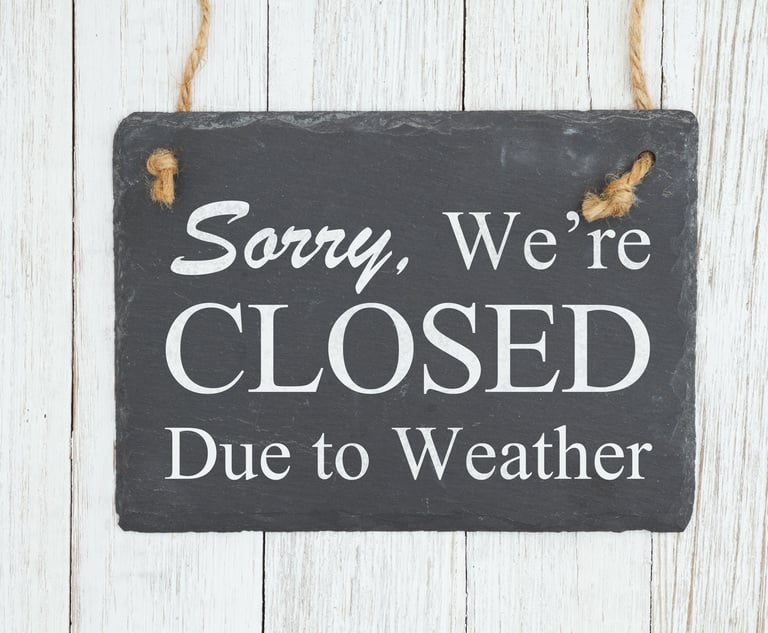Atlanta Federal Judge Levels Mountain of Motions After a Year on 'Top' of National List
While Judge Michael Brown in Atlanta has cut his backlog to zero, other judges are still wrestling with long-pending motions. Comments from judges and clerks suggest staffing problems—and two Category 5 hurricanes that hit the Virgin Islands—contribute to the problem.
July 06, 2020 at 12:17 PM
7 minute read
 Judge Mike Brown, U.S. District Court for the Northern District of Georgia, Atlanta. (Courtesy photo)
Judge Mike Brown, U.S. District Court for the Northern District of Georgia, Atlanta. (Courtesy photo)
An Atlanta judge has eliminated the backlog that for a year dogged him as the federal jurist carrying the most civil case motions pending more than six months.
James Hatten, the chief clerk of the U.S. District Court for the Northern District of Georgia, said Judge Michael Brown has leveled a mountain of old motions that last September reached as high as 204. That is when the most recent caseload data were collected by the Administrative Office of the U.S. Courts as required by the Civil Justice Reform Act of 1990.
Brown, whom Hatten said declined to comment, also led all federal judges in March 2019 with 177 motions pending six months. Sixty-two of those motions had been filed before Brown joined the court in January 2018.
But by the end of this March, Hatten said, Brown had zero motions pending more than six months and expects the same result by the end of the next reporting period.
Asked how the judge made such progress, Hatten said, "He was working on a lot of different things." Hatten agreed with a question suggesting that many of the pending motions that piled up may have had decisions that were almost finished.
"Most of this was trying to get it right," Hatten said.
Five other federal district judges carried at least 100 motions pending more than six months in the September 2019 report, which was released in March. They were:
- Chief Judge Wilma Lewis of the U.S. Virgin Islands (141, up from 125 in March 2019);
- Judge Lawrence Vilardo of the Western District of New York (116, down from 156);
- Judge Richard Arcara, also from the Western District of the New York (112, down from 115);
- Judge Troy Nunley of the Eastern District of California (109, down from 133); and
- Judge William Kuntz of the Eastern District of New York (100, up from 71).
Comments from judges and clerks suggest staffing problems—and two Category 5 hurricanes that hit the Virgin Islands—contribute to the backlogs.
Neither Kuntz nor Arcara could be reached.
Catching up in Buffalo
In Buffalo, New York, a clerk for Vilardo said the Western District has waited since 1992 for Congress to grant a request for a fifth district court judgeship.
"Since he took office in October 2015 until December 2019, Judge Vilardo was the only active district judge in Buffalo," wrote Allison P. Gioia in an email to the Daily Report. "In fact, it took over four years to fill a second vacancy in Buffalo that had existed in the district before Judge Vilardo was confirmed."
Gioia said more equitable case reassignment within the district helped Vilardo tackle his backlog, which fell 25% in the period ending last September. "And by working six and very often seven days a week," she added, "he had only 35 motions pending over six months by March 31, 2020. And he hopes and expects that number to get even lower."
California Caseloads
In California's Eastern District, a request for comment from Nunley, whose six-month motions fell from 133 to 109, led to a response from the court's chief clerk, Keith Holland. He shared documents and memos detailing what judges there described as a "caseload crisis" in a 2018 letter to their U.S. senators.
"It is not debatable that the resources of our District have been deficient for three decades," they wrote. They noted that Eastern District judges carry about 900 cases, compared to 425 for the average district judge, and for more than a decade, the Judicial Conference of the United States has recommended Congress create four to six new judgeships for the district.
In February, Judge Dale Drozd of Fresno issued emergency procedures for civil and criminal cases to handle a shortage of judges that "are not, in the undersigned's view, conducive to the fair administration of justice. However, the court has been placed in an untenable position in which it simply has no choice."
Irma and Maria
Lewis told the Daily Report in an email that she inherited a backlog of motions from cases when she joined the court in 2011.
"For example, although at the end of my first 6-month reporting period on March 31, 2012, I had only 32 reportable motions, that number increased to over 200 reportable motions during the course of the next one or two 6-month periods as additional cases were transferred to my docket," she wrote.
Over the years, Lewis would cut the backlog to the low 100s, only to see the docket, which includes many "motions heavy" civil cases, push the numbers back over 200.
In August 2013, Lewis became the chief judge of the district, adding "a significant amount of responsibilities associated with the management of the administrative affairs of the Court.
"I have managed the Court through two Government shut-downs, a period of sequestration, an ongoing major capital renovation project at one of our courthouses, two Category 5 hurricanes in September 2017, and now, COVID-19," she added.
Hurricanes Irma and Maria led to a three-month closure of the court. Those events, plus two eight-week trials, "created a pressing need thereafter to focus on other pending criminal matters that required attention in view of Speedy Trial Act considerations," she added.
During the most recent reporting period, when the number of motions pending six months rose from 125 to 141, Lewis said she was on medical leave for approximately seven weeks.
"We have been fortunate to have the assistance of visiting judges over the years," Lewis said in response to a question about how to reduce the backlog. "However, we have not been over-indulgent in the use of their services, recognizing that they have responsibilities in their own districts. A more aggressive and strategic use of such resources would likely be beneficial."
This content has been archived. It is available through our partners, LexisNexis® and Bloomberg Law.
To view this content, please continue to their sites.
Not a Lexis Subscriber?
Subscribe Now
Not a Bloomberg Law Subscriber?
Subscribe Now
NOT FOR REPRINT
© 2025 ALM Global, LLC, All Rights Reserved. Request academic re-use from www.copyright.com. All other uses, submit a request to [email protected]. For more information visit Asset & Logo Licensing.
You Might Like
View All
Spalding Jurors Return $12M Verdict Against State Farm Insurance Client
10 minute read

Trending Stories
- 1Supreme Court Takes Up Challenge to ACA Task Force
- 2'Tragedy of Unspeakable Proportions:' Could Edison, DWP, Face Lawsuits Over LA Wildfires?
- 3Meta Pulls Plug on DEI Programs
- 4On the Move and After Hours: Meyner and Landis; Cooper Levenson; Ogletree Deakins; Saiber
- 5State Budget Proposal Includes More Money for Courts—for Now
Who Got The Work
Michael G. Bongiorno, Andrew Scott Dulberg and Elizabeth E. Driscoll from Wilmer Cutler Pickering Hale and Dorr have stepped in to represent Symbotic Inc., an A.I.-enabled technology platform that focuses on increasing supply chain efficiency, and other defendants in a pending shareholder derivative lawsuit. The case, filed Oct. 2 in Massachusetts District Court by the Brown Law Firm on behalf of Stephen Austen, accuses certain officers and directors of misleading investors in regard to Symbotic's potential for margin growth by failing to disclose that the company was not equipped to timely deploy its systems or manage expenses through project delays. The case, assigned to U.S. District Judge Nathaniel M. Gorton, is 1:24-cv-12522, Austen v. Cohen et al.
Who Got The Work
Edmund Polubinski and Marie Killmond of Davis Polk & Wardwell have entered appearances for data platform software development company MongoDB and other defendants in a pending shareholder derivative lawsuit. The action, filed Oct. 7 in New York Southern District Court by the Brown Law Firm, accuses the company's directors and/or officers of falsely expressing confidence in the company’s restructuring of its sales incentive plan and downplaying the severity of decreases in its upfront commitments. The case is 1:24-cv-07594, Roy v. Ittycheria et al.
Who Got The Work
Amy O. Bruchs and Kurt F. Ellison of Michael Best & Friedrich have entered appearances for Epic Systems Corp. in a pending employment discrimination lawsuit. The suit was filed Sept. 7 in Wisconsin Western District Court by Levine Eisberner LLC and Siri & Glimstad on behalf of a project manager who claims that he was wrongfully terminated after applying for a religious exemption to the defendant's COVID-19 vaccine mandate. The case, assigned to U.S. Magistrate Judge Anita Marie Boor, is 3:24-cv-00630, Secker, Nathan v. Epic Systems Corporation.
Who Got The Work
David X. Sullivan, Thomas J. Finn and Gregory A. Hall from McCarter & English have entered appearances for Sunrun Installation Services in a pending civil rights lawsuit. The complaint was filed Sept. 4 in Connecticut District Court by attorney Robert M. Berke on behalf of former employee George Edward Steins, who was arrested and charged with employing an unregistered home improvement salesperson. The complaint alleges that had Sunrun informed the Connecticut Department of Consumer Protection that the plaintiff's employment had ended in 2017 and that he no longer held Sunrun's home improvement contractor license, he would not have been hit with charges, which were dismissed in May 2024. The case, assigned to U.S. District Judge Jeffrey A. Meyer, is 3:24-cv-01423, Steins v. Sunrun, Inc. et al.
Who Got The Work
Greenberg Traurig shareholder Joshua L. Raskin has entered an appearance for boohoo.com UK Ltd. in a pending patent infringement lawsuit. The suit, filed Sept. 3 in Texas Eastern District Court by Rozier Hardt McDonough on behalf of Alto Dynamics, asserts five patents related to an online shopping platform. The case, assigned to U.S. District Judge Rodney Gilstrap, is 2:24-cv-00719, Alto Dynamics, LLC v. boohoo.com UK Limited.
Featured Firms
Law Offices of Gary Martin Hays & Associates, P.C.
(470) 294-1674
Law Offices of Mark E. Salomone
(857) 444-6468
Smith & Hassler
(713) 739-1250







